Top speed 76 km/h Wingspan 7.79 m Manufacturer Blériot Aéronautique | Length 7.62 m First flight January 23, 1909 | |
 | ||
Designers Raymond Saulnier, Louis Blériot | ||
Gigantic rc xxxl bl riot xi scale model airplane demo flight euroflugtag rheidt 2016
The Blériot XI is a French aircraft. The first example was used by Louis Blériot to make the first flight across the English Channel in a heavier-than-air aircraft on 25 July 1909. This achievement is one of the most famous accomplishments of the pioneer era of aviation, and not only won Blériot a lasting place in history but also assured the future of his aircraft manufacturing business. The event caused a major reappraisal of the importance of aviation; the English newspaper The Daily Express led its story of the flight with the headline "Britain is no longer an Island".
Contents
- Gigantic rc xxxl bl riot xi scale model airplane demo flight euroflugtag rheidt 2016
- Design
- The Channel crossing
- Subsequent history
- Further development
- Civil use
- Military use
- Famous Blriot Monoplane pilots
- Variants
- Military operators
- Survivors
- Airworthy aircraft
- Display aircraft
- Specifications Blriot XI
- References
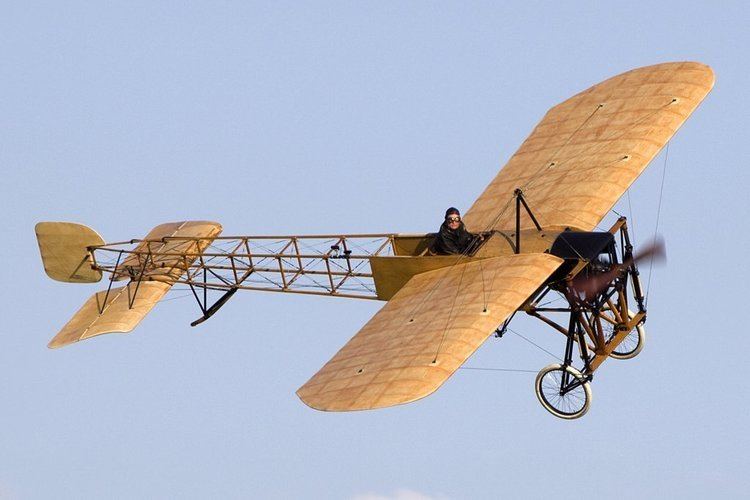
It was produced in both single- and two-seat versions, powered by a number of different engines and was widely used for competition and training purposes. Military versions were bought by many countries, continuing in service until after the outbreak of World War I in 1914. Two restored examples — one in the United Kingdom and one in the United States — of original Blériot XI aircraft are thought to be the two oldest flyable aircraft in the world.
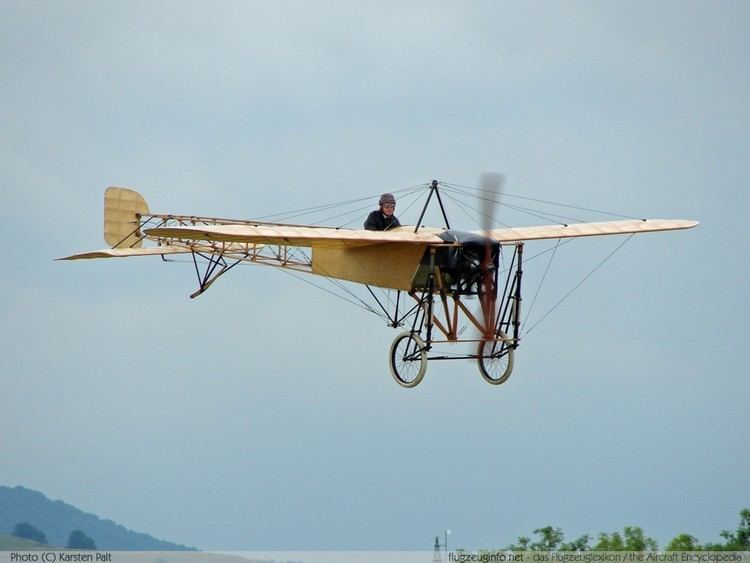
Gigantic rc xxxl bl riot xi scale model airplane demo flight euroflugtag rheidt 2016
Design

The Blériot XI, largely designed by Raymond Saulnier, was a development of the Blériot VIII, which Blériot had flown successfully in 1908. Like its predecessor, it was a tractor-configuration monoplane with a partially covered box-girder fuselage built from ash with wire cross bracing. The principal difference was the use of wing warping for lateral control. The tail surfaces consisted of a small balanced "all-moving" rudder mounted on the rearmost vertical member of the fuselage and a horizontal tailplane mounted under the lower longerons. This had elevator surfaces making up the outermost part of the fixed horizontal surface; these "tip elevators" were linked by a torque tube running through the inner section. The bracing and warping wires were attached to a dorsal cabane consisting of a pair of inverted V struts with their apexes connected by a longitudinal tube and an inverted four-sided pyramidal ventral cabane, also of steel tubing, below. When first built it had a wingspan of 7 m (23 ft) and a small teardrop-shaped fin mounted on the cabane, which was later removed.
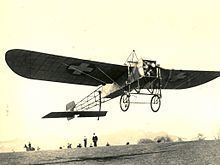
Like its predecessor, it had the engine mounted directly in front of the leading edge of the wing and the main undercarriage was also like that of the Type VIII, with the wheels mounted in castering trailing arms which could slide up and down steel tubes, the movement being sprung by bungee cords. This simple and ingenious design allowed crosswind landings with less risk of damage. A sprung tailwheel was fitted to the rear fuselage in front of the tailplane, with a similar castering arrangement.
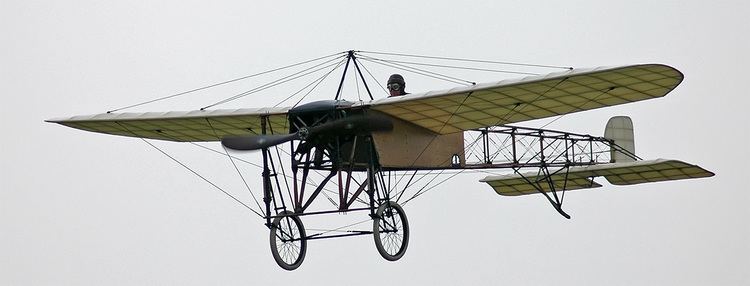
When shown at the Paris Aero Salon in December 1908, the aircraft was powered by a 26 kW (35 hp) 7-cylinder R.E.P. engine driving a four-bladed paddle-type propeller. The aircraft was first flown at Issy-les-Moulineaux on 23 January 1909, but although the aircraft handled well, the engine proved extremely unreliable and, at the suggestion of his mechanic Ferdinand Collin, Blériot made contact with Alessandro Anzani, a famous motorcycle racer whose successes were due to the engines that he made, and who had recently entered the field of aero-engine manufacture. On 27 May 1909, a 19 kW (25 hp) Anzani 3-cylinder fan-configuration (semi-radial) engine was fitted. The propeller was also replaced with a Chauvière Intégrale two-bladed propeller made from laminated walnut wood. This propeller design was a major advance in French aircraft technology and was the first European propeller to rival the efficiency of the propellers used by the Wright Brothers.
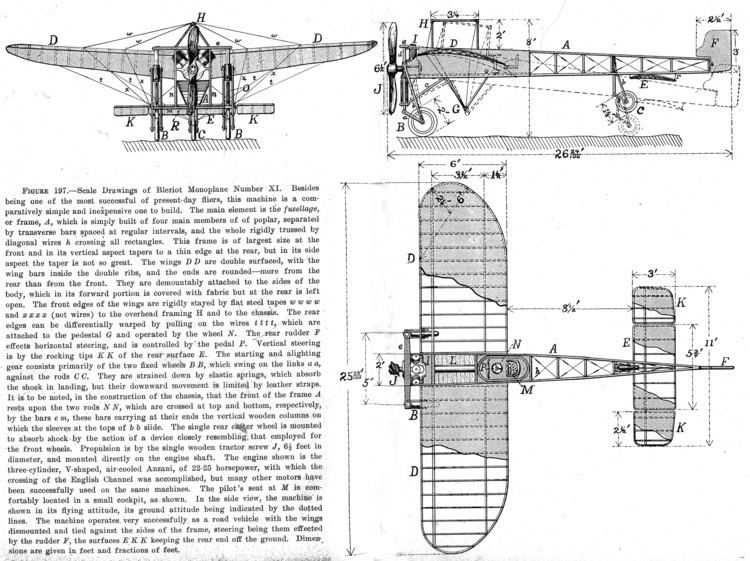
During early July, Blériot was occupied with flight trials of a new aircraft, the two-seater Type XII, but resumed flying the Type XI on 18 July. By then, the small cabane fin had been removed and the wingspan increased by 79 cm (31 in). On 26 June, he managed a flight lasting 36 minutes 55 seconds, and on 13 July, Blériot won the Aero Club de France's first Prix du Voyage with a 42 km (26 mi) flight between Etampes and Orléans.
The Channel crossing
The Blériot XI gained lasting fame on 25 July 1909, when Blériot crossed the English Channel from Calais to Dover, winning a £1,000 prize awarded by the Daily Mail. For several days, high winds had grounded Blériot and his rivals: Hubert Latham, who flew an Antoinette monoplane, and Count de Lambert, who brought two Wright biplanes. On 25 July, when the wind had dropped in the morning and the skies had cleared, Blériot took off at sunrise. Flying without the aid of a compass, he deviated to the east of his intended course, but, nonetheless, spotted the English coast to his left. Battling turbulent wind conditions, Blériot made a heavy "pancake" landing, nearly collapsing the undercarriage and shattering one blade of the propeller, but he was unhurt. The flight had taken 36.5 minutes and had made Blériot a celebrity, instantly resulting in many orders for copies of his aircraft.
The aircraft, which never flew again, was hurriedly repaired and put on display at Selfridges department store in London. It was later displayed outside the offices of the French newspaper Le Matin and eventually bought by the Musee des Arts et Metiers in Paris.
Subsequent history
After the successful crossing of the English Channel, there was a great demand for Blériot XIs. By the end of September 1909, orders had been received for 103 aircraft. After an accident at an aviation meeting in Istanbul in December 1909, Blériot gave up competition flying, and the company's entries for competitions were flown by other pilots, including Alfred Leblanc, who had managed the logistics of the cross-channel flight, and subsequently bought the first production Type XI, going on to become one of the chief instructors at the flying schools established by Blériot.
In February 1912 the future of the Type XI was threatened by the French army placing a ban on the use of all monoplanes. This was the result of a series of accidents in which Blériot aircraft had suffered wing failure in flight. The first of these incidents had occurred on 4 January 1910, killing Léon Delagrange, and was generally attributed to the fact that Delagrange had fitted an over-powerful engine, so overstressing the airframe. A similar accident had killed Peruvian pilot Jorge Chavez at the end of 1910 at the end of the first flight over the Alps, and in response to this the wing spars of the Blériot had been strengthened. A subsequent accident led to a further strengthening of the spars. Blériot, understandably, took this matter very seriously, and produced a report for the French government which came to the conclusion that the problem was not the strength of the wing spars but a failure to take into account the amount of downward force to which aircraft wings could be subjected, and that the problem could be solved by increasing the strength of the upper bracing wires. This analysis was accepted, and Blériot's prompt and thorough response to the problem enhanced rather than damaged his reputation.
Further development
The Type XI remained in production until the outbreak of the First World War, and a number of variations were produced. Various types of engine were fitted, including the 120° Y-configuration, "full radial" three-cylinder Anzani (like the restored example at Old Rhinebeck Aerodrome still flies with) and the 37 kW (50 hp) and 52 kW (70 hp), seven cylinder Gnome rotary engines. Both single and two-seat versions were built, and there were variations in wingspan and fuselage length. In later aircraft the tip elevators were replaced by a more conventional trailing edge elevator, the tailwheel was replaced by a skid, and the former "house-roof" five-member dorsal cabane being replaced by a simpler, four-sided pyramidally framed unit similar to the ventral arrangement for the later rotary-powered versions. Blériot marketed the aircraft in four categories: trainers, sport or touring models, military aircraft, and racing or exhibition aircraft.
Civil use
The Type XI took part in many competitions and races. In August 1910 Leblanc won the 805 km (500 mi) Circuit de l'Est race, and another Blériot flown by Emile Aubrun was the only other aircraft to finish the course. In October 1910, Claude Grahame-White won the second competition for the Gordon Bennett Trophy flying a Type XI fitted with a 75 kW (100 hp) Gnome, beating a similar aircraft flown by Leblanc, which force-landed on the last lap. During the race Leblanc had established a new world speed record. In 1911, Andre Beaumont won the Circuit of Europe in a Type XI and another, flown by Roland Garros, came second.
Louis Blériot established his first flying school at Etampes near Rouen in 1909. Another was started at Pau, where the climate made year-round flying more practical, in early 1910 and in September 1910 a third was established at Hendon Aerodrome near London. A considerable number of pilots were trained: by 1914 nearly 1,000 pilots had gained their Aero Club de France license at the Blériot schools, around half the total number of licences issued. Flight training was offered free to those who had bought a Blériot aircraft: for others it initially cost 2,000 francs, this being reduced to 800 francs in 1912. A gifted pupil favoured by good weather could gain his license in as little as eight days, although for some it took as long as six weeks. There were no dual control aircraft in these early days, training simply consisting of basic instruction on the use of the controls followed by solo taxying exercises, progressing to short straight-line flights and then to circuits. To gain a license a pilot had to make three circular flights of more than 5 km (3 mi), landing within 150 m (490 ft) of a designated point.
Military use
The first Blériot XIs entered military service in Italy and France in 1910, and a year later, some of those were used in action by Italy in North Africa (the first use of aircraft in a war) and in Mexico. The British Royal Flying Corps received its first Blériots in 1912. During the early stages of World War I, eight French, six British and six Italian squadrons operated various military versions of the aircraft, mainly in observation duties but also as trainers, and in the case of single-seaters, as light bombers with a bomb load of up to 25 kg.
Famous Blériot Monoplane pilots
Variants
Military operators
Survivors
In addition to the aircraft used by Louis Blériot to make his cross-channel flight in 1909, on display in the Musée des Arts et Métiers in Paris, a number of examples have been preserved. Both the British and American restored-to-airworthiness examples, each now over a century old and believed to be the two oldest flyable aircraft anywhere on Earth, are usually only "hopped" for short distances due to their uniqueness.
Airworthy aircraft
Display aircraft
Specifications (Blériot XI)
Data from
General characteristics
Performance
